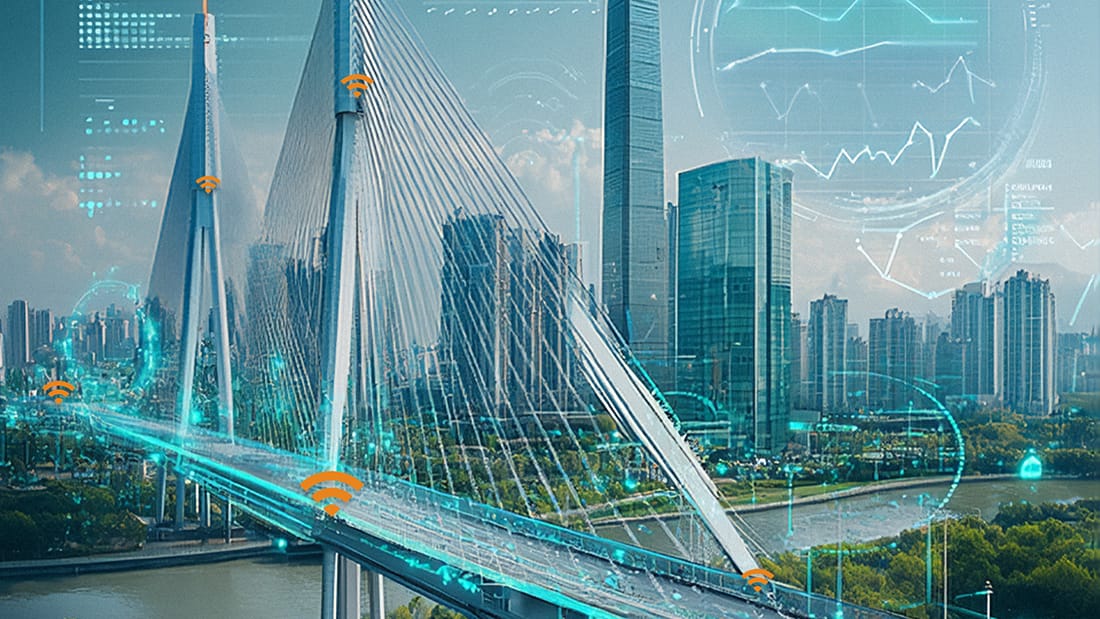The Future of Structural Health Monitoring: Emerging Trends and Technologies
Structural Health Monitoring (SHM) is rapidly evolving, driven by advances in technology and the growing need to maintain the integrity of critical infrastructure. As urbanization intensifies and infrastructure ages, ensuring the safety and durability of structures like bridges, buildings, and dams has never been more crucial. At Pulse IoT Technologies, we are at the forefront of this transformation, leveraging cutting-edge IoT solutions to monitor and safeguard structural health. In this blog, we explore the emerging trends and technologies shaping the future of SHM.
1. IoT-Enabled Real-Time Monitoring
IoT is revolutionizing structural health monitoring by enabling real-time data collection and analysis. Traditional SHM methods often relied on periodic inspections and manual data logging, which can miss critical changes in structural integrity. IoT devices, such as concrete sensors and wireless strain gauges, provide continuous monitoring, allowing for the early detection of issues like corroded rebar or cracks in concrete. This real-time approach enhances the ability to predict and prevent failures, reducing the need for costly repairs and extending the lifespan of infrastructure.
2. Advanced Data Analytics and Machine Learning
The sheer volume of data generated by IoT-based SHM systems requires sophisticated data analytics to extract meaningful insights. Machine learning algorithms are increasingly being integrated into SHM platforms to identify patterns and predict structural issues before they become critical. For example, by analyzing data from structure monitoring systems, machine learning can predict the onset of concrete deterioration, enabling proactive maintenance strategies and more efficient allocation of resources.
3. The Rise of Smart Materials
Smart materials are an exciting development in the field of SHM. These materials can change their properties in response to environmental conditions, providing real-time feedback on the structural health of a building or bridge. For instance, self-sensing concrete incorporates sensors directly into the material, allowing for continuous monitoring of factors like stress, temperature, and moisture. This innovation not only enhances the accuracy of SHM but also simplifies the process of repairing concrete, as issues can be detected and addressed early.
4. Integration of Drones and Robotics
Drones and robotics are becoming integral tools in SHM, particularly for inspecting hard-to-reach areas or large-scale structures. Equipped with high-resolution cameras and sensors, drones can quickly and safely assess the condition of infrastructure, such as high-rise buildings or expansive bridges. Robotics, on the other hand, can be used to perform detailed inspections and even assist in concrete repair, particularly in hazardous environments. The use of drones and robotics not only improves the efficiency of SHM but also reduces the risks associated with manual inspections.
5. Predictive Maintenance and Digital Twins
Predictive maintenance, enabled by IoT and advanced analytics, is set to become a standard practice in
SHM. By continuously monitoring the health of a structure, it is possible to predict when and where
maintenance will be needed, preventing failures before they occur. This approach is closely linked to the
concept of digital twins—virtual replicas of physical structures that can simulate and predict their
behaviour under various conditions. Digital twins provide infrastructure owners with a powerful tool to
optimize maintenance schedules, reduce costs, and enhance the overall safety of their assets.
The future of structural health monitoring is bright, with IoT, smart materials, and advanced analytics
driving significant advancements. At Pulse IoT Technologies, we are committed to staying at the cutting
edge of these developments, providing innovative solutions that ensure the safety, durability, and
longevity of critical infrastructure. As the industry continues to evolve, embracing these emerging trends
and technologies will be key to maintaining the integrity of our built environment.
By integrating these innovations into your SHM strategy, you can proactively address structural issues,
reduce maintenance costs, and ensure the long-term safety of your infrastructure. Whether you're
dealing with concrete sensors, corroded rebar, or planning the repair of concrete, the future of SHM
promises more efficient, effective, and intelligent solutions.

